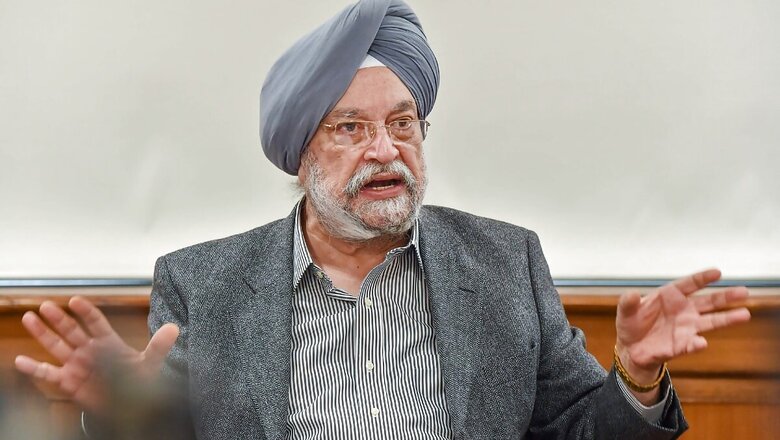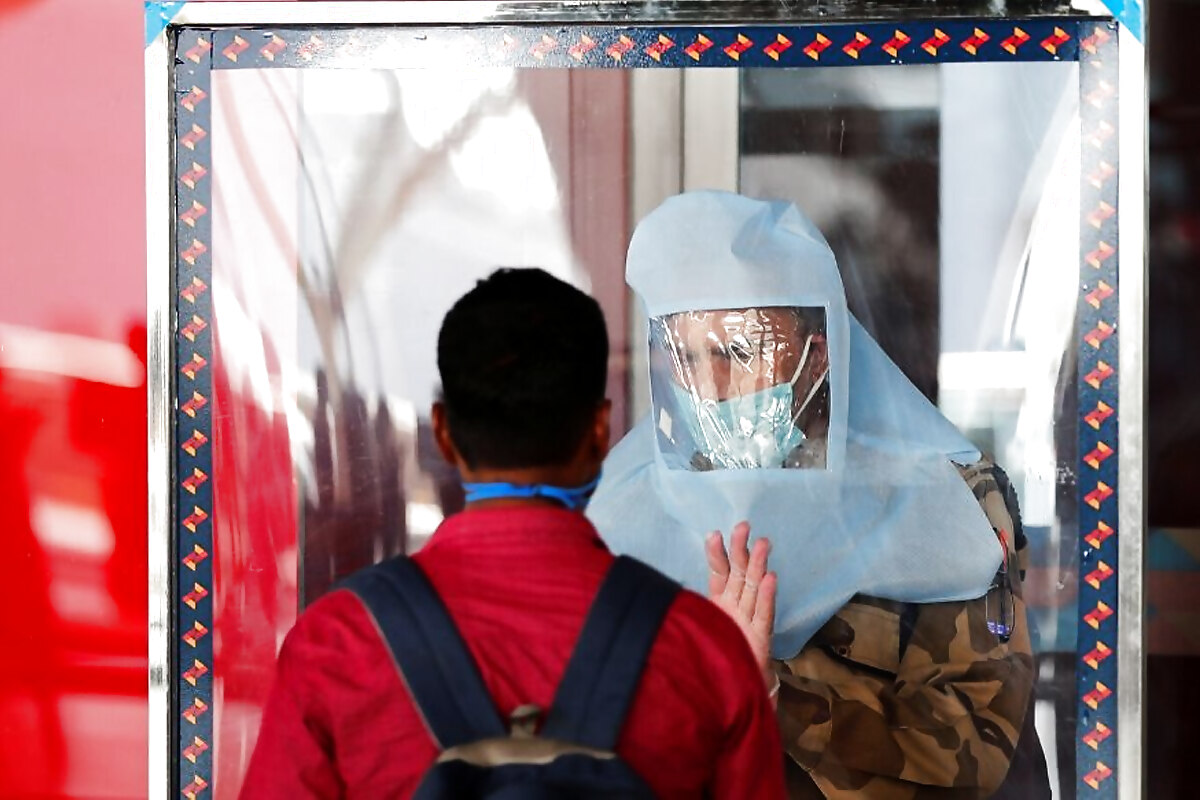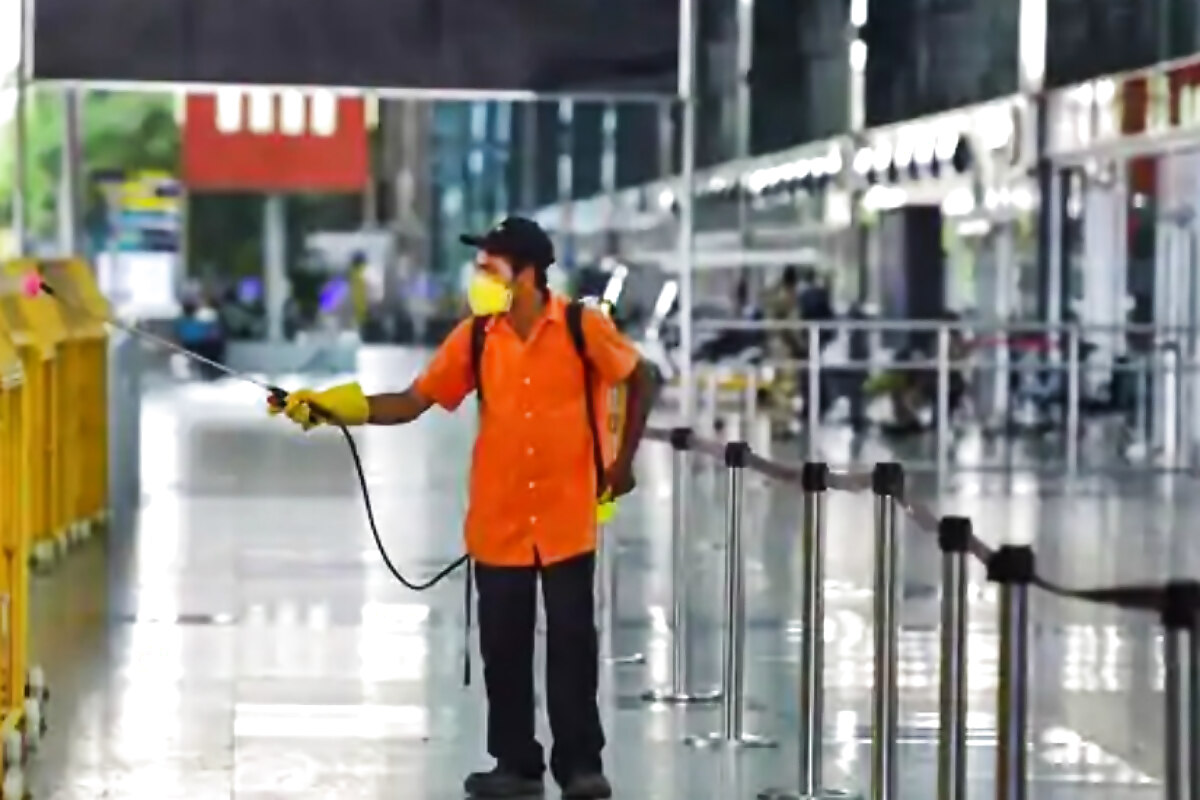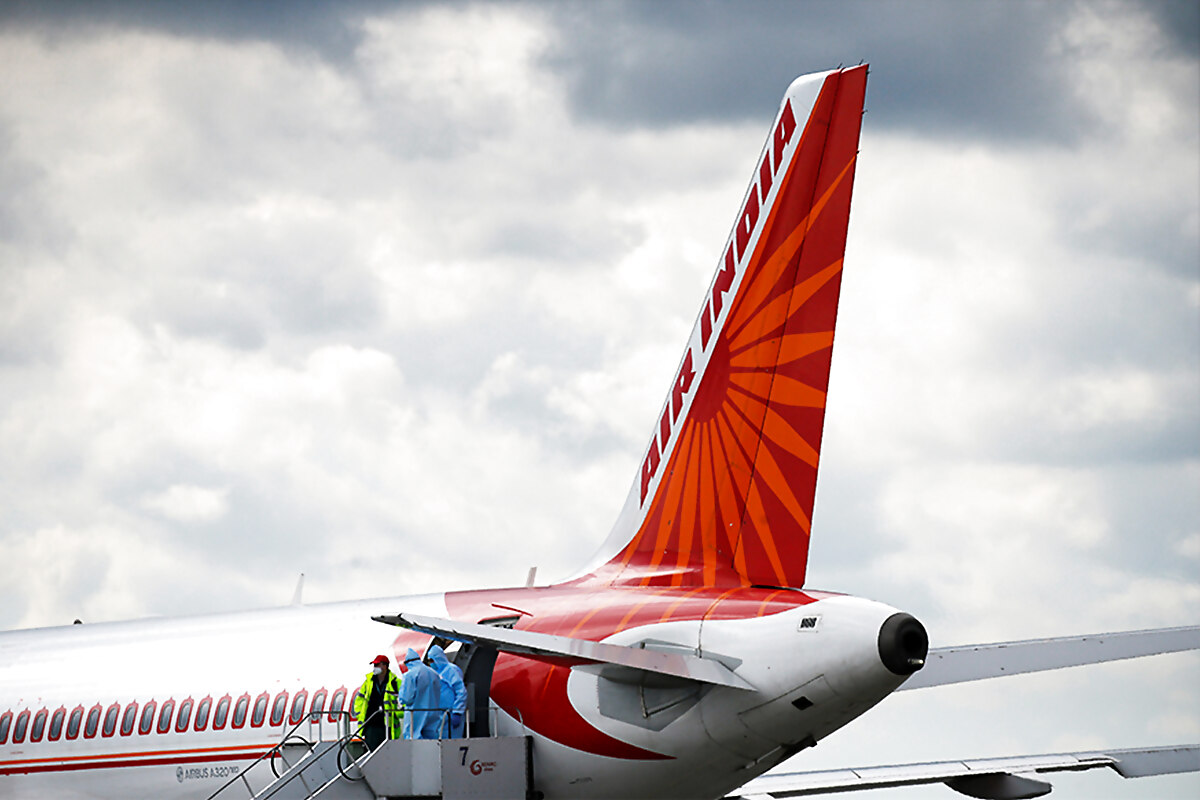
views
Even as India records an unprecedented spike in the number of new Coronavirus cases in India, the country has been easing down on the restrictions that were put on different modes of travel, be it by air or by road. With the metro services recently being restarted in several states across the nation, and air travel restrictions being relaxed to a great extent as compared to what they were about six months ago, the questions that arise are whether the decision to relax these services could have been postponed. And if so, what are the factors based on which such decisions are taken and what is the way forward for the public transport services and the aviation industry.
We find out the answers to these questions in our conversation with the Civil Aviation Minister of India, Hardeep Singh Puri where he tells us that air travel is the safest form of travel and that India will reach pre-covid levels of air passengers by the end of 2020.
Q.) It’s been over three and a half months since domestic flights were resumed, which to be specific was from May 25. You’ve said that over 8 million Indians have travelled so far, but given the spike that we are seeing in the new Covid cases that are nearing 1 lakh per day, are you looking forward to opening more sectors or shutting down some?
A.) To understand or fully comprehend the imperatives of opening up, I should share with you my understanding of the numbers. It’s very easy to talk about the spike in numbers, but let’s look at the overall picture, both in India and globally.
To begin with, we are a country with a large population. If you are testing millions and your positive rate is 8%, the recovery rate is 80% and case mortality ration is about 1.5%, then my submission is that you don’t have a cause to worry.
Much of this information on GDP and others, sometimes end up painting alarming scenarios. The fact of the matter is that of all the viruses we have dealt with, Black Fever (also known as Kala-Azar) was the one with the highest mortality rate; about 17%. The average mortality rate for Covid-19 for India (with variations allowed) is 1.7% which is twice of normal influenza.
Q.) So in that case, are you only looking to opening up the sectors?
A.) No, I’m not. You cannot just look at opening up. First, the decision to open up in itself was a difficult one. Clamping down and lockdown is very easy. You are seeing the numbers rise in every part of the world and you want a lockdown to insulate your people from what is happening globally.
We were one of the first countries to stop flights from China and to introduce thermal screening at the airports. But over time, and because PM’s lockdown was initiated, we were able to buy time and produce the infrastructure required; the beds, PPE kits, ventilators. But there comes a time when the lockdown becomes as costly as it is a decision between life and livelihood.
We said, at the highest level of governments, that you have the systems in place and you can begin to open up. When we opened up domestic aviation on May 25, there were 423 flights and we flew 30,000 passengers. Yesterday, there were 1,300 flights and the maximum we have reached is 1,41,000 passengers. It is possible that with safety protocols in place, we might be able to open up.
Q.) You said that media is sounding alarmist, but the International Air Transport Association has said that the global passenger traffic will not return to the pre-Covid era till 2024. Are you of the same opinion?
A.) It has been demonstrated that air travel is the safest mode of transport if you compare it to surface transport like buses and trains. Everyone has a designated seat, the air ventilation is from top-down so it gets filtered clean. I am going to make a prediction that we will reach the 1,50,000 very soon and by Dec 31, 2020, we’ll touch our pre-Covid figure of 3,00,000.

Q.) What about RT-PCR testing? We are seeing it happening at Delhi and Mumbai airports. Will you be expanding it to other airports?
A.) When we opened the Vande Bharat flights, there were a lot of state quarantined people. So, we introduced the RT-PCR tests. Now, if the passengers have been tested, they can upload their negative test report and can walk through the green channel. My guess is that only 30-40% of people are availing that and many are still queuing wrongly. It’s a human trait.
What was happening at Delhi airport was that everybody who wanted to avoid quarantine was negotiating through WhatsApp messages. That introduces an element of subjective discretion. So, we decided to do away with this altogether. You get yourself tested before you come, within 96 hours, and you upload it. We had to advertise it. We have decided to install machines at airports as well. So, if you forget to take the test, you can get tested at the airport. We have also created a separate area where you can get tested. So, we need to ensure that when civil aviation actually opens up to pre-Covid levels, there’s no congestion.
Q.) Let’s talk about ticket refunds. Do you think it was an avoidable controversy if you had instructed the airlines in advance?
A.) The DGCA gave clear directions that if you had accepted bookings during the Covid period when you were not supposed to, you have to refund immediately. Now, bookings happened after the lockdown opened up. If the airlines had collected money, they had to repay. But you have to look at the circumstances. So, we have given a very detailed affidavit at the direction of the court. My understanding is that this problem was acute during a particular period of time. The airlines collected money and they had no revenue stream. Our instructions were very clear.
Q.) What about the consumer bodies that are saying that there should be a refund for senior citizens and regarding the airfare hike. Is there a sense that the ministry can take a relook?
A.) There is no airfare hike. We have stakeholder consultations including airlines and consumer associations. These involve everyone. It’s a court directive. You have to be careful about what we are saying. Many of the fares are not collected by the airlines, they are collected by travel agents. If a particular issue is causing consternation, I get to know pretty fast since I get trolled in the process. The airlines will pay when they have earnings. The issue is the credit shell. If you have this impression that the air traffic will not resume then a credit shell doesn’t make any sense.
We have made several innovative provisions. For instance, you book a ticket and it’s in the credit shell and you if are not likely to travel, you can pass the credit onto someone. I think that the problem has either been resolved or soon will be resolved by the next quarter.

Q.) When do you see the international air travel space recovering, be it Indians travelling abroad or those who are visiting India?
A.) You can’t predict or anticipate the behaviour of the virus. There are three things that are happening right now. First, the restrictions at the point of entry. For example, if the university is not taking physical classes, your visa won’t be acted upon, even if you have the valid US visa and you are a student. Second, in the Gulf, we are flying empty planes to certain countries to bring back the stranded Indians. Because they are not allowing citizens from other countries or from some particular countries. If you have to start international civil aviation like in the pre-Covid times, your domestic civil aviation must reach a certain threshold, about 50% or more. Because international flights will come into Mumbai, Calcutta or Bengaluru and possibly, the international passenger won’t have the required domestic flight to take after that.
We are close to meeting that domestic number, but other countries must ease their visa restrictions. So, in the absence of that, we have done the second-best thing. We have opened up bilateral civil aviation agreements with a large number of nations. US, Canada, Britain, France, Germany, UAE and some other countries in the Gulf, and another 13 countries including our neighbours. What happens here is that the designated carriers of the two countries conduct the flights once a day or many times a week under regulated conditions.
Q.) Is this the best solution you could have offered?
A.) I think it is a pretty good solution. This is a transitional phase between total lockdown and normal civil aviation phase. Once visa restrictions open up, quarantine restrictions open up. Now, before travellers embark on a journey, they check the quarantine restrictions at the point of entry.
A lot of people have Indian visas, as a result, we had to issue instructions regarding certain visas. We are allowing diplomats, businesses. We are slowly opening up. We started with a modest number of 12,000 passengers in phase 1 from May 6-May 13. Today, we are in phase 6 and the numbers are increasing quickly.

Q.) Has the pandemic skippered the disinvestment of Air India?
A.) Not at all. I can make out a very convincing case that the pandemic will actually act as a boost to the process. Air India is one carrier which is not encumbered or inhabited by the fact that there are hundreds of planes. Second, we have been able to bring the cost of operating Air India down to 1500 crore a year. Air India has a very good safety record and it has civil aviation access. It flies 40-50 international destinations and has 60 domestic destinations, and it has 125 planes. There are lesser arrangements on other things that need to be sorted out. One of my students used to say that we have a neighbouring army that has a country attached to it. So, whoever buys Air India will have a civil aviation market which comes with it.
Q.) Since we’ve entered into phase 6, the prices are very high. For example, Delhi-Toronto flight costs Rs 1.7 lakh, Delhi-Houston costs Rs 1.3 lakh. Are you looking at rationalization?
A.) When Vande Bharat started, the highest fare was Rs 1 lakh when the corresponding carriers of other countries were charging Rs 3 lakh. Today, the fares are 50-70k. These issues happened because the planes were flying less. The aircraft needs to be grounded for 48 hours before it could make a journey back and the prices were still competitive.
Q.) Metro lines across Delhi, Noida, Lucknow, Kochi, Bengaluru, Kolkata, Chennai, Hyderabad have resumed services but in a calibrated manner. There’s also a view that since the cases are rising have you rushed into the opening of the metro services?
A.) Not at all. I think urban mobility is the lifeline of an economy. If you don’t run a metro or public transport system, it doesn’t mean people are not going to travel, unless they are quarantined. They need to travel. So, they will use other modes like cars or buses. Metro, like air transport, is a safe means of transport. But we have to be careful. When we opened up on the 7th, the numbers were 15,800 passengers. I’m talking about Delhi. Yesterday’s figure was 1,98,000 passengers. I think till once we reach the 10 lakh figure, which I’m expecting would be by a week after 12th, we will have to monitor it closely. The air conditioning and ventilation system inside the metro are organized to take in a heavy rush. The crowd is not going to take place. We are not able to countenance that crowd.

Q.) Are you going to open more services or there’s going to be a rethink based on the rising cases?
A.) Centre provides overall guidelines. Each state is fully autonomous, capable of their own decision making. One of the states – Maharashtra, when we announced opening up on 7th, decided that they needed more time. They did the same with air travel. Prior to Covid, they had 1,000 flights a day. When we opened up, they started at 25, and now it is at 100. It’s their pace. West Bengal doesn’t take flights on 3 days from certain cities or no flights at all on some days.
I think it is evident that you need to open economic activities by ensuring precautions are in place. And therefore, we see openings taking place and it will evolve in a calibrated manner. I don’t see us in Delhi going back to 60 lakh in a day (pre-Covid number). We will see this increase when the number reaches 10 lakhs.
Q.) Reports are coming in that the masks are off. People are moving around in train without masks. This safety protocol falls on the passengers. When the footfall increases, don’t you think the opening up of metro with this kind of behaviour of the individual defeats the purpose?
A.) When we did the first press conference, we said we will have no hesitation in naming and shaming. There are cameras all over the place. All the safety precautions are in place. The good news is that today, people are wearing masks and maintaining social distancing. If they don’t, then we might have to press the pause button. Because today, public opinion is a powerful instrument. More than that, it’s a heightened level of health consciousness. Therefore, the underlying sentiment behind opening up was to be anchored in cautions.


















Comments
0 comment